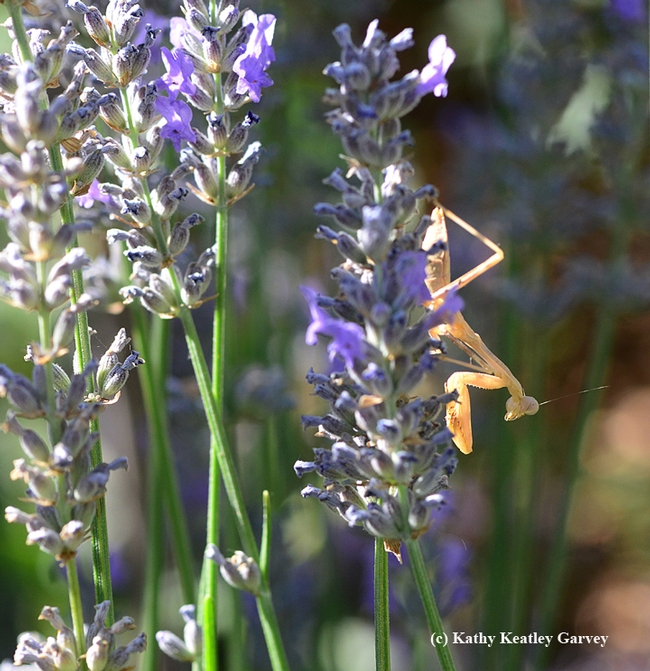
But how can you sleep when you sense a predator in your midst?
Last night, as usual, was Boys' Night Out in our lavender patch. The male longhorned digger bees, Melissodes agilis (as identified by native pollinator specialist Robbin Thorp, emeritus professor of entomology at the University of California, Davis), were sleeping on a lavender stem, as the females nested underground.
The males cluster or "roost" or "camp out" on the stems from around 6 at night until 7 in the morning, and it's a sight to see. A veritable bedroom community. Our lavender patch is a living room during the day and a bedroom at night.
Curiously enough, the males are very territorial in daylight hours as they compete for the females. We've seen them dive-bomb carpenter bees, bumble bees, sweat bees, butterflies, dragonflies and the males of their own species.
But even though they battle fiercely during the day, they sleep together peacefully at night.
Lately the roosting males seem to be vanishing. We're accustomed to seeing 12 to 15 on a stem. It's dwindled down to eight or nine. Where did they go? Did they find another place? A better "bed?" More room at the inn?
So at 6:30 a.m. today, we parted the lavender stems to observe the boys. Not as many as yesterday.
Wait, what's that? Could it be? It was. A praying mantis!
And the praying mantis, looking quite emaciated, was edging toward the sleeping boys.
Easy pickings. Too easy. Would it grab one of them?
It did not.
It climbed down the lavender stem, peered at the sleeping boys--hmm, breakfast?--and then moved to another lavender stem.
Close call? Maybe. Maybe not. We've heard that praying mantids prefer moving prey and these prey weren't moving.
Attached Images:

A praying mantis climbs down a lavender stem to get a closer look at the sleeping boy bees, longhorned digger bees, Melissodes agilis. (Photo by Kathy Keatley Garvey)

The praying mantis peers at what could be prey but they're sleeping. (Photo by Kathy Keatley Garvey)

The praying mantis "assumes the position" on another lavender stem as it waits for live prey. (Photo by Kathy Keatley Garvey)

Whew! That was close. A sleepy male longhorned digger bee gets ready to fly. (Photo by Kathy Keatley Garvey)